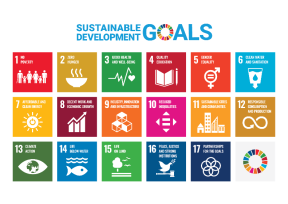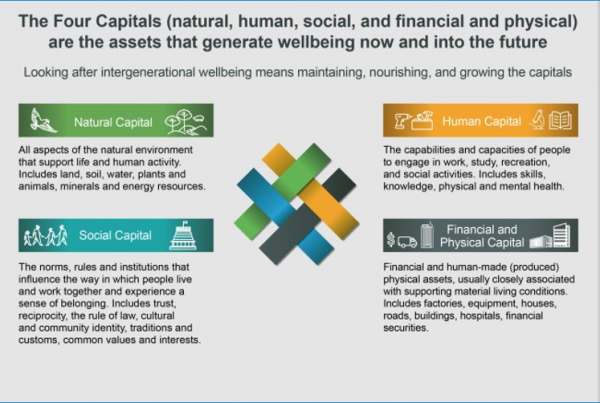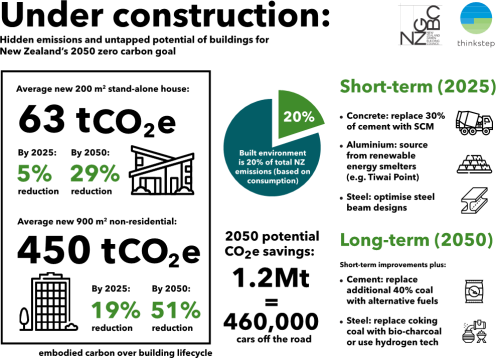A once-in-a-lifetime-opportunity
In the aftermath of COVID-19, we have been presented with a challenging yet remarkable opportunity for a paradigm shift. A strong reset is needed to step away from the destructive habits and patterns we have become accustomed to and to find a new business-as-usual. This will require businesses and governments to work together to pair economic recovery with the health and well-being of the planet and its people. Globally, the United Nations Sustainable Development Goals (SDGs) offer a framework for way forward without trade-offs between the planet, people, and the economy. In New Zealand, the Treasury’s Living Standards Framework (LSF) is optimally positioned to guide this journey and reflects the values of the SDGs in its four capital stocks that lay the foundations for future wellbeing. The future wellbeing indicators are natural, human, social, and financial & physical wellbeing.

‘Our Only Future’
The LSF considers climate change as a key part in achieving its goal of ‘intergenerational wellbeing’ through the natural capitalstock. The natural capital stock is one of four capital stocks and considers all aspects of the natural environment that supports life on land (SDG 15), life below water (SDG 14) and global warming (SDG 13). SDG13 is concerned with climate action: 'Take urgent action to combat climate change and its impacts.' The climate science is clear on what this action needs to be; to limit the worst impacts of climate change, we need to ensure global warming does not exceed 1.5°C above pre-industrial levels. The good news is that while it may be an ambitious goal, it is also an achievable one. Now is the time to urge for a new business-as-usual for climate action as economies around the world start the recovery process and planning for a post COVID-19 world.

The ‘Recover Better’ statement released earlier in the year — as part of one of the largest CEO-backed, UN-led climate advocacy campaigns — calls for a multi-faceted approach to recovery that prioritises the health of the planet and its people alongside economic recovery. Barbara Nebel, CEO of thinkstep-anz, agrees: 'We can’t afford trade-offs between economic recovery, social well-being, and environmental protection based on the latest climate science. We must tackle all four capitals of the Living Standards Framework.' This is where manufacturers come in.
The key role for manufacturers
The financial & physical capital stock within the Living Standards Framework will be of particular relevance in the manufacturing industry as it focuses on factories, equipment, construction, infrastructure and industry in general.

This is where manufacturers can really drive change along with extending their actions to have a positive impact on the other three capitals of the framework through employing staff, investing in clean technologies and innovation for a low carbon economy. For example, a 2019 thinkstep-anz report highlights how innovation in the manufacturing of building materials can lead to significant savings in the embodied carbon emissions of New Zealand's building and construction sector by 40% by 2050.
More recently, the concrete industry has come forward to reveal that they are halfway towards meeting their target of a 30 percent reduction in carbon dioxide emissions by 2030. Based off an independent review by thinkstep-anz on behalf of Concrete NZ, the results show that the concrete industry is on the right trajectory to meet New Zealand’s climate change commitments under the Paris Agreement.
Transitioning to 100% clean energy
The transition to 100% clean energy was one of the key climate action (SDG 13) recommendations of the ‘Recover Better’ statement and is also supported by the LSF’s wellbeing indicator for natural capital which includes land, water and energy sources (SDG 7). As a country rich in renewable sources, New Zealand is well-placed for a transition to 100% clean energy with an electricity mix that is already over 80% renewable.
However, more progress is needed outside of renewable electricity production for 100% clean energy. There will be some catching up to do for the transition to a low-carbon economy for areas such as transport energy and stationary thermal energy, among others. The New Zealand concrete industry is currently on track to meet both its climate targets and the country’s climate change commitments partly due to innovations in addressing sources of stationary thermal energy. Their strategies included replacing coal with alternative fuels such as biomass and investing in projects with other alternatives such as tyre-derived fuels.
In New Zealand, both SMEs and large businesses have jumped on board for climate action with the Climate Leaders Coalition, which is made up of over 100 CEOs committed to reducing their emissions to create a future that is low-emission, positive for our businesses and economy, and inclusive for all New Zealanders. CLC signatories include companies such as Downer, Fisher & Paykel Healthcare, Oji Fibre Solutions and DB breweries. While manufacturers and businesses are making progress, this needs to also be stimulated by the government demanding their low carbon products and services.
Healthy planet AND healthy people
A multi-faceted approach should ensure that no-one is left behind in an economic reset. Then, it makes every sense for manufacturers moving forward to consider the natural, human, social, and financial & physical stocks—and the SDGs they reflect—alongside financial and economic frameworks in recovery plans to ensure the future wellbeing of New Zealanders.
In a collaborative piece for Stuff, thinkstep-anz’s Barbara Nebel and Toitū Envirocare’s Becky Lloyd explore how government influence can accelerate the paradigm shift that we need. They advocate for the implementation of government-wide sustainable procurement strategies which would allow the Government to leverage its planned spending of over $40B for goods and services to influence New Zealand’s supply chain in line with the Living Standards Framework to set a new business-as-usual.
By Barbara Nebel, CEO of thinkstep-anz
This article was first published in NZ Manufacturer magazine, June 2020.